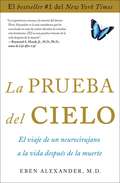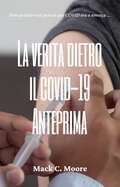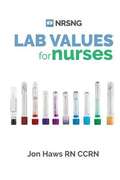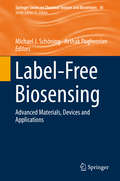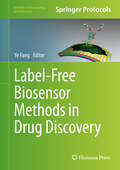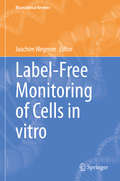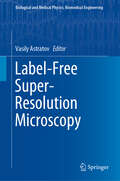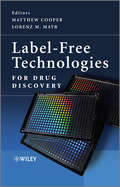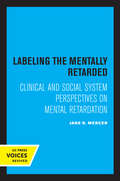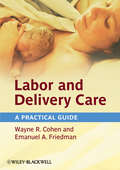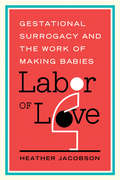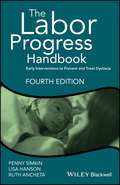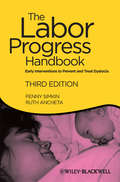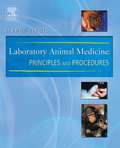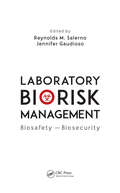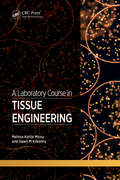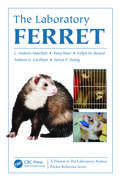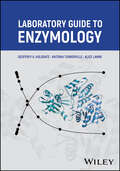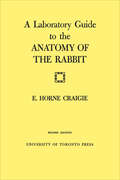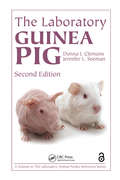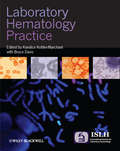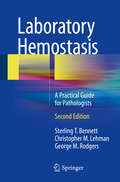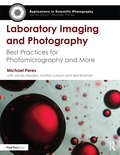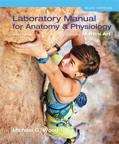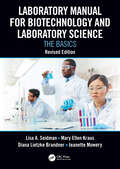- Table View
- List View
La prueba del cielo: el viaje de un neurocirujano a la vida después de la muerte
by Eben AlexanderMiles de personas han tenido experiencias cercanas a la muerte, pero los científicos han sostenido de que son imposibles. El doctor Eben Alexander era uno de esos científicos. Un neurocirujano altamente entrenado, Alexander sabía que las experiencias cercanas a la muerte se sienten reales, pero que simplemente son fantasías producidas por el cerebro bajo un estrés extremo. Luego, el cerebro del propio doctor Alexander fue atacado por una extraña enfermedad. La parte del cerebro que controla los pensamientos y las emociones —y en esencia nos hace humanos— se le apagó por completo. Estuvo en coma durante siete días. Entonces, mientras sus médicos consideraban parar su tratamiento, los ojos de Alexander se abrieron. Volvió. La recuperación de Alexander es un milagro médico. Pero el verdadero milagro de su historia yace en otro lugar. Mientras su cuerpo estaba en coma, Alexander viajó más allá de este mundo y se encontró con un ser angelical que lo guió a los terrenos más profundos de la existencia suprafísica. Allá conoció a, y habló con, la fuente Divina del universo. La historia de Alexander no es una fantasía. Antes de comenzar su viaje, no podía reconciliar su conocimiento de la neurociencia con ninguna creencia del cielo, Dios ni el alma. Hoy en día, Alexander es un médico que cree que la verdadera salud se puede adquirir solo cuando nos damos cuenta de que Dios y el alma son reales y la muerte no es el final de la existencia personal, sino solo una transición. Esta historia sería extraordinaria sin importar a quién le haya ocurrido. Que le haya ocurrido al doctor Alexander la hace revolucionaria. Ningún científico ni persona de fe la podrá ignorar. Leerla te cambiará la vida.
La Verità dietro il Covid-19 Anteprima
by Mack C. MooreLa Cina ha approvato la legge sul vaccino prima della pandemia? Esistono report accurati sul Covid-19? I vaccini sono sicuri? È davvero il COVID la reale minaccia? Trova le risposte a queste domande e tanto altro ancora in La Verità dietro il Covid-19 Anteprima. Questo libro analizza i report riguardanti la pandemia e fuga i timori e le preoccupazioni che abbiamo per il COVID. Svela la verità dietro la pandemia di COVID-19. Questa è un'anteprima di una versione più dettagliata ed esplosiva in uscita nel 2021. Scopri le verità che ci stanno nascondendo!
Lab Values: 63 Must Know Labs for Nurses
by Jon Haws Sandra Haws#1 Best Selling Nursing Reference Book on Amazon Want to study better, but don't have the time? This book outlines the 63 MUST KNOW lab values for nurses to help them prepare for the NCLEX ® and care for patients on the floor. Whether you are a student nurse or an experience this book contains the information you need to know to provide superior patient care. <p><p> Charts + Brief Descriptions = Fast Learning <p> The book includes a brief introduction followed by charts including 63 important lab values with their units, normal ranges, and abbreviations. The charts are followed by a brief description for each individual value including: indications, what would cause abnormal values, and a description of the lab value itself. <p> Download :: Lab Values: 63 Must Know Lab Values for Nurses <p>Lab Values contains an easy to read and follow catalog of the most essential labs for nurses.<br> Color graphics and charts<br> Normal lab values and common abbreviations<br> Descriptions of each value<br> Correct filling order for specimen tubes<p> Stop wasting time on you studies and start acing exams and spending more time actually caring for patients. With this ebook for kindle or kindle app you will learn the 63 most important labs for nurses and the NCLEX - RN ®. This is the perfect pocket guide and makes lab value interpretation easy. **FREE** Gift included (4 Page PDF download and lab charts).<p> NCLEX, NCLEX-RN, and NCLEX-PN are registered trademarks of the National Council of State Boards of Nursing, Inc. They hold no affiliation with this product.
Label-Free Biosensing: Advanced Materials, Devices and Applications (Springer Series on Chemical Sensors and Biosensors #16)
by Michael J. Schöning Arshak PoghossianThis volume summarizes the state-of-the-art technologies, key advances and future trends in the field of label-free biosensing. It provides detailed insights into the different types of solid-state, label-free biosensors, their underlying transducer principles, advanced materials utilized, device-fabrication techniques and various applications. The book offers graduate students, academic researchers, and industry professionals a comprehensive source of information on all facets of label-free biosensing and the future trends in this flourishing field. Highlights of the subjects covered include label-free biosensing with:· semiconductor field-effect devices such as nanomaterial-modified capacitive electrolyte-insulator-semiconductor structures, silicon nanowire transistors, III-nitride semiconductor devices and light-addressable potentiometric sensors· impedimetric biosensors using planar and 3D electrodes· nanocavity and solid-state nanopore devices · carbon nanotube and graphene/graphene oxide biosensors· electrochemical biosensors using molecularly imprinted polymers· biomimetic sensors based on acoustic signal transduction· enzyme logic systems and digital biosensors based on the biocomputing concept· heat-transfer as a novel transducer principle· ultrasensitive surface plasmon resonance biosensors · magnetic biosensors and magnetic imaging devices
Label-Free Biosensor Methods in Drug Discovery
by Ye FangThis volume explores label-free biosensors, advantageous in part because this technology bypasses the need of labels, reporters, and cell engineering, all of which are common to labeled techniques but may introduce artifacts in assay results. Addressing several fundamental and practical aspects as to how to implement label-free methods in the drug discovery process, this book covers a wide range of topics, including binding kinetics determination, fragment screening, antibody epitope mapping, protein-protein interaction profiling and screening, receptor pathway deconvolution, drug pharmacology profiling and screening, target identification, drug toxicity assessment, and physical phenotype profiling and diagnostics based on various cellular processes such as cell adhesion, migration, invasion, infection, and inflammation. As part of the Methods in Pharmacology and Toxicology series, chapters aim to provide key detail and implementation advice to aid with progress in the lab. Practical and thorough, Label-Free Biosensor Methods in Drug Discovery provides a new avenue for rapid access to a focused collection of highly regarded contributions in the field.
Label-Free Monitoring of Cells in vitro (Bioanalytical Reviews #2)
by Joachim WegenerThis book is dedicated to label-free, non-invasive monitoring of cell-based assays and it comprises the most widely applied techniques. Each approach is described and critically evaluated by an expert in the field such that researchers get an overview on what is possible and where the limitations are. The book provides the theoretical basis for each technique as well as the most successful and exciting applications.Label-free bioanalytical techniques have been known for a long time as valuable tools to monitor adsorption processes at the solid-liquid interface in general – and biomolecular interaction analysis (BIA) in particular. The underlying concepts have been progressively transferred to the analysis of cell-based assays. The strength of these approaches is implicitly given with the name 'label-free': the readout is independent of any label, reagent or additive that contaminates the system under study and potentially affects its properties. Thus, label-free techniques provide an unbiased analytical perspective in the sense that the sample is not manipulated by additives but pure. They are commonly based on physical principles and read changes in integral physical properties of the sample like refractive index, conductivity, capacitance or elastic modulus to mention just a few. Even though it is not implied in the name, label-free approaches usually monitor the cells under study non-invasively meaning that the amplitude of the signal (e.g. electric field strength, mechanical elongation) that is used for the measurement is too low to interfere or affect. In contrast to label-based analytical techniques that are commonly restricted to a single reading at a predefined time point, label-free approaches allow for a continuous observation so that the dynamics of the biological system or reaction become accessible.
Label-Free Super-Resolution Microscopy (Biological and Medical Physics, Biomedical Engineering)
by Vasily AstratovThis book presents the advances in super-resolution microscopy in physics and biomedical optics for nanoscale imaging. In the last decade, super-resolved fluorescence imaging has opened new horizons in improving the resolution of optical microscopes far beyond the classical diffraction limit, leading to the Nobel Prize in Chemistry in 2014. This book represents the first comprehensive review of a different type of super-resolved microscopy, which does not rely on using fluorescent markers. Such label-free super-resolution microscopy enables potentially even broader applications in life sciences and nanoscale imaging, but is much more challenging and it is based on different physical concepts and approaches. A unique feature of this book is that it combines insights into mechanisms of label-free super-resolution with a vast range of applications from fast imaging of living cells to inorganic nanostructures. This book can be used by researchers in biological and medical physics. Due to its logically organizational structure, it can be also used as a teaching tool in graduate and upper-division undergraduate-level courses devoted to super-resolved microscopy, nanoscale imaging, microscopy instrumentation, and biomedical imaging.
Label-Free Technologies For Drug Discovery
by Matthew Cooper Lorenz M. MayrOver the past two decades the benefits of label-free biosensor analysis have begun to make an impact in the market, and systems are beginning to be used as mainstream research tools in many drug discovery laboratories.Label-Free Technologies For Drug Discovery summarises the latest and emerging developments in label-free detection systems, their underlying technology principles and end-user case studies that reveal the power and limitations of label-free in all areas of drug discovery.Label-free technologies discussed include SPR, NMR, high-throughput mass spectrometry, resonant waveguide plate-based screening, transmitted-light imaging, isothermal titration calorimetry, optical and impedance cell-based assays and other biophysical methods. The technologies are discussed in relation to their use as screening technologies, high-content technologies, hit finding and hit validation strategies, mode of action and ADME/T, access to difficult target classes, cell-based receptor/ligand interactions particularly orphan receptors, and antibody and small molecule affinity and kinetic analysis.Label-Free Technologies For Drug Discovery is an essential guide to this emerging class of tools for researchers in drug discovery and development, particularly high-throughput screening and compound profiling teams, medicinal chemists, structural biologists, assay developers, ADME/T specialists, and others interested in biomolecular interaction analysis.
Labeling the Mentally Retarded: Clinical and Social System Perspectives on Mental Retardation
by Jane R. MercerThis eight-year study of an American city traces the answer to the question "Who is retarded?" by analyzing the labeling process in a large number of community agencies. Data for the study are drawn from a representative sample of 7,000 persons under fifty years of age who were tested ans screened for "symptoms" of mental retardation. The author finds that that schools label more persons as mentally retarded than any other agency and share their labels more widely with others in the community. Relying on IQ test scores for diagnosis, schools place many persons with scores above 70 and with no physical disabilities in the role of retardate. The author contends that both the statistical model of "normal" and the unicultural viewpoint of educators and clinicians work to the disadvantage of the poor and the ethnic minorities. Given the opportunity, many persons demonstrate by their ability to cope with the problems in other areas of life that they are not comprehensively incompetent. The author makes serval policy recommendations. First, she suggests lowering the IQ score cutoff point used by schools in determining who shall be labeled as retarded. Second, she recommends that the clinicians use the two-dimensional definition of retardation proposed by the American Association of Mental Deficiency, subnormality in both intellectual performance and adaptive behavior. Third, she concludes that pluralistic assessment procedures must be employed to take into account cultural biases in IQ tests designed to measure cognitive skills. This title is part of UC Press's Voices Revived program, which commemorates University of California Press's mission to seek out and cultivate the brightest minds and give them voice, reach, and impact. Drawing on a backlist dating to 1893, Voices Revived makes high-quality, peer-reviewed scholarship accessible once again using print-on-demand technology. This title was originally published in 1973.
Labor and Delivery Care
by Wayne R. Cohen Emanuel A. FriedmanLabor and Delivery Care: A Practical Guide supports and reinforces the acquisition of the practical obstetric skills needed for aiding a successful birth.Beginning with the most important element of successful labor care, communicating with the patient, the authors guide you through normal delivery routines and examination techniques. They then address the best approaches to the full range of challenges that can arise during labor and delivery. Throughout, the 15 chapters provide concise practical guidance with:algorithmic decision treesclinical management tipsdetailed drawingsLabor and Delivery Care: A Practical Guide provides a thorough tour-de-force of the practical obstetric skills needed for best and safest practice based on clinical experience and evidence.
Labor of Love: Gestational Surrogacy and the Work of Making Babies
by Heather JacobsonWhile the practice of surrogacy has existed for millennia, new fertility technologies have allowed women to act as gestational surrogates, carrying children that are not genetically their own. While some women volunteer to act as gestational surrogates for friends or family members, others get paid for performing this service. The first ethnographic study of gestational surrogacy in the United States, Labor of Love examines the conflicted attitudes that emerge when the ostensibly priceless act of bringing a child into the world becomes a paid occupation. Heather Jacobson interviews not only surrogate mothers, but also their family members, the intended parents who employ surrogates, and the various professionals who work to facilitate the process. Seeking to understand how gestational surrogates perceive their vocation, she discovers that many regard surrogacy as a calling, but are reluctant to describe it as a job. In the process, Jacobson dissects the complex set of social attitudes underlying this resistance toward conceiving of pregnancy as a form of employment. Through her extensive field research, Jacobson gives readers a firsthand look at the many challenges faced by gestational surrogates, who deal with complicated medical procedures, delicate work-family balances, and tricky social dynamics. Yet Labor of Love also demonstrates the extent to which advances in reproductive technology are affecting all Americans, changing how we think about maternity, family, and the labor involved in giving birth. For more, visit http://www.heatherjacobsononline.com/
The Labor Progress Handbook: Early Interventions to Prevent and Treat Dystocia
by Lisa Hanson Penny Simkin Ruth AnchetaPraise for the previous edition: "This…edition is timely, useful, well organized, and should be in the bags of all doulas, nurses, midwives, physicians, and students involved in childbirth."–Journal of Midwifery and Women's Health The Labor Progress Handbook: Early Interventions to Prevent and Treat Dystocia is an unparalleled resource on simple, non-invasive interventions to prevent or treat difficult or prolonged labor. Thoroughly updated and highly illustrated, the book shows how to tailor one’s care to the suspected etiology of the problem, using the least complex interventions first, followed by more complex interventions if necessary. This new edition now includes a new chapter on reducing dystocia in labors with epidurals, new material on the microbiome, as well as information on new counselling approaches specially designed for midwives to assist those who have had traumatic childbirths. Fully referenced and full of practical instructions throughout, The Labor Progress Handbook continues to be an indispensable guide for novices and experts alike who will benefit from its concise and accessible content.
The Labor Progress Handbook
by Penny Simkin Ruth AnchetaThe third edition of The Labor Progress Handbook builds on the success of first two editions and remains an unparalleled resource on simple, non-invasive interventions to prevent or treat difficult labor. Features new to this edition include two new chapters on third and fourth stage labor management and low-technology interventions, a complete analysis of directed versus spontaneous pushing, and additional information on massage techniques.
Laboratory Animal Medicine: Principles and Procedures
by Margi SiroisComprehensive coverage of a variety of topics such as animal species, the laboratory setting, regulatory guidelines, and ethical considerations prepares readers for a career in laboratory animal medicine. Familiarizes readers with the handling, behavior, nutrition, and lab and treatment procedures for a large variety of common and nontraditional laboratory animals. The consistent organization of each species chapter makes it easy for readers to quickly identify similarities and differences among various laboratory animals. Laboratory exercises are included in a perforated section at the end of the book, allowing users to apply their knowledge and develop job skills. Features a wealth of user-friendly features such as a two-color design, learning objectives, key points, and review questions. Provides detailed information on specific legal and ethical requirements of lab animal care and use, including the ethics of pain management. Convenient boxes and tables provide quick access to,important anatomic and physiologic data for each species.
Laboratory Biorisk Management: Biosafety and Biosecurity
by Reynolds M. Salerno Jennifer GaudiosoOver the past two decades bioscience facilities worldwide have experienced multiple safety and security incidents, including many notable incidents at so-called "sophisticated facilities" in North America and Western Europe. This demonstrates that a system based solely on biosafety levels and security regulations may not be sufficient.Setting the s
A Laboratory Course in Tissue Engineering
by Melissa Kurtis Micou Dawn KilkennyFilling the need for a lab textbook in this rapidly growing field, A Laboratory Course in Tissue Engineering helps students develop hands-on experience. The book contains fifteen standalone experiments based on both classic tissue-engineering approaches and recent advances in the field. Experiments encompass a set of widely applicable techniques: c
The Laboratory Ferret (Laboratory Animal Pocket Reference)
by C. Andrew Matchett Rena Marr Felipe M. Berard Andrew G. Cawthon Sonya P. SwingLaboratory animals, including ferrets, play an important role in biomedical research and advances. The humane care and management of these animals remains an ongoing concern. Published in color to provide greater clarity to the techniques and concepts discussed, The Laboratory Ferret presents basic information and common procedures in detail to pro
Laboratory Guide to Enzymology
by Geoffrey A. Holdgate Antonia Turberville Alice LanneLABORATORY GUIDE TO ENZYMOLOGY An accessible guide to understanding the foundations of enzymology at its application in drug discovery Enzymes are highly specialized proteins necessary for performing specific biochemical reactions essential for life in all organisms. In disease, the functioning of these enzymes can become altered and, therefore, enzymes represent a large class of key targets for drug discovery. In order to successfully target dysfunctional enzymes pharmaceutically, the unique mechanism of each enzyme must be understood through thorough and in-depth kinetic analysis. The topic of enzymology can appear challenging due its interdisciplinary nature combining concepts from biology, chemistry, and mathematics. Laboratory Guide to Enzymology brings together the theory of enzymology and associated lab-based work to offer a practical, accessible guide encompassing all three scientific disciplines. Beginning with a brief introduction to proteins and enzymes, the book slowly immerses the reader into the foundations of enzymology and how it can be used in drug discovery using modern methods of experimentation. The result is a detailed but highly readable volume detailing the basis of drug discovery research. Laboratory Guide to Enzymology readers will also find: Descriptions of key concepts in enzymology Examples of drugs targeting different enzymes via different mechanisms Detailed discussion about many areas of enzymology such as binding and steady-state kinetics, assay development, and enzyme inhibition and activation Laboratory Guide to Enzymology is ideal for all pharmaceutical and biomedical researchers working in enzymology and assay development, as well as advanced students in the biochemical or biomedical sciences looking to develop a working knowledge of this field of research.
A Laboratory Guide to the Anatomy of The Rabbit: Second Edition
by Edward CraigieThe present work does not in any way aim to replace Bensley's Practical Anatomy of the Rabbit, which has long since proved its value beyond question. The attempt has been to meet a need for a shorter and less detailed laboratory guide adapted to courses for which Bensley's Anatomy has been found too extensive. Classes for which the present book is designed have assignments of time for this subject varying from about twenty-four hours to about sixty hours. Some of them have two-hour periods and some have three-hour periods. Some, moreover, have need for special emphasis on certain parts which are of less immediate interest to others. Of the twenty-eight illustrations, fifteen are new and the remainder have been borrowed from Bensley's Practical Anatomy. Four of the latter were the work of the late Dr. Bensley, the rest were prepared by the present author.
The Laboratory Guinea Pig
by Donna J. Clemons Jennifer L. SeemanLaboratory animals play an important role in biomedical research and advances. Expanded, updated, and now published in full color to provide greater clarity to the techniques and concepts discussed, this guide presents basic information and common procedures in detail to provide a quick reference for investigators, technicians, and caretakers in the laboratory setting. It includes additional information on the research uses of the guinea pig along with updated medical care information.
Laboratory Hematology Practice
by Bruce Davis Kandice Kottke-MarchantExpertly edited and endorsed by the International Society for Laboratory Hematology, this is the newest international textbook on all aspects of laboratory hematology. Covering both traditional and cutting-edge hematology laboratory technology this book emphasizes international recommendations for testing practices. Illustrative case studies on how technology can be used in patient diagnosis are included. Laboratory Hematology Practice is an invaluable resource for all those working in the field.
Laboratory Hemostasis
by Sterling T. Bennett Christopher M. Lehman George M. RodgersCoagulation testing is the basis for the diagnosis of bleeding and thrombotic disorders, as well as the mainstay of anticoagulant monitoring and management. This handbook provides practical information and guidance on topics relevant to directing a coagulation laboratory, filling a void in the literature. Since the first edition, all chapters have been updated and an entirely new chapter is included on pharmacogenomics and pharmacogenetics. The book will aid pathologists, clinical laboratory scientists and other physicians serving as laboratory directors to understand and carry out their responsibilities. It will also assist residents and fellows in learning the basics of coagulation testing and serve as a useful day-to-day reference for coagulation laboratory supervisors, technologists, and technicians. Finally, clinicians may find aspects of the book helpful in understanding the role of the coagulation laboratory in patient evaluation and monitoring.
Laboratory Imaging & Photography: Best Practices for Photomicrography & More (Applications in Scientific Photography)
by Michael PeresLaboratory Imaging and Photography: Best Practices for Photomicrography and More is the definitive guide to the production of scientific images. Inside, the reader will find an overview of the theory and practice of laboratory photography, along with useful approaches to choosing equipment, handling samples, and working with microscopic subjects. Drawing from over 150 years of combined experience in the field, the authors outline methods of properly capturing, processing and archiving the images that are essential to scientific research. Also included are chapters on applied close-up photography, artificial light photography and the optics used in today’s laboratory environment, with detailed entries on light, confocal and scanning electron microscopy. A lab manual for the digital era, this peerless reference book explains how to record visual data accurately in an industry where a photograph can serve to establish a scientific fact. Key features include: Over 200 full-color photographs and illustrations A condensed history of scientific photography Tips on using the Adobe Creative Suite for scientific applications A cheat sheet of best practices Methods used in computational photography
Laboratory Manual For Anatomy And Physiology Featuring Martini Art, Main Version
by Michael WoodThis laboratory manual is designed to serve the lab course that accompanies the two-semester anatomy and physiology lecture course. It provides students with comprehensive coverage of anatomy and physiology, beautiful full-color art and photographs, and an intuitive pedagogical framework. The primary goals of this manual are to provide students with hands-on experiences that reinforce the information they learn in the lecture course and to help them understand three-dimensional relationships, visualize complex structures, and comprehend intricate physiological processes. The manual is written to correspond to all current two-semester anatomy and physiology textbooks, although those students and instructors using Fundamentals of Anatomy & Physiology, Tenth Edition, by Frederic H. Martini, Judi L. Nath, and Edwin F. Bartholomew will recognize here some of the superb art from that text by William Ober and Claire Garrison, Martini's renowned biomedical illustrators. This sixth edition manual is available in three separate versions. The Main Version covers the full two-semester A&P curriculum, including dissections of the cow eye and of the sheep heart, brain, and kidney. The Cat Version includes all of the same material plus an additional section of nine cat dissection exercises encompassing the major body systems. The Pig Version, similarly, includes all of the material from the Main Version with a separate section of nine fetal pig dissection exercises. The Cat and Pig Versions make the manual more useful to instructors whose students perform animal dissections in the lab. The outstanding dissections and accompanying photographs are by Shawn Miller and Mark Neilsen and I thank each of them for their expertise.
Laboratory Manual for Biotechnology and Laboratory Science: The Basics, Revised Edition
by Lisa A. Seidman Mary Ellen Kraus Diana Lietzke Brandner Jeanette MoweryProvides the basic laboratory skills and knowledge to pursue a career in biotechnology. Written by four biotechnology instructors with over 20 years of teaching experience, it incorporates instruction, exercises, and laboratory activities that the authors have been using and perfecting for years. These exercises and activities help students understand the fundamentals of working in a biotechnology laboratory. Building skills through an organized and systematic presentation of materials, procedures, and tasks, the manual explores overarching themes that relate to all biotechnology workplaces including forensic, clinical, quality control, environmental, and other testing laboratories. Features: • Provides clear instructions and step-by-step exercises to make learning the material easier for students. • Emphasizes fundamental laboratory skills that prepare students for the industry. • Builds students’ skills through an organized and systematic presentation of materials, procedures, and tasks. • Updates reflect recent innovations and regulatory requirements to ensure students stay up to date. • Supplies skills suitable for careers in forensic, clinical, quality control, environmental, and other testing laboratories.
